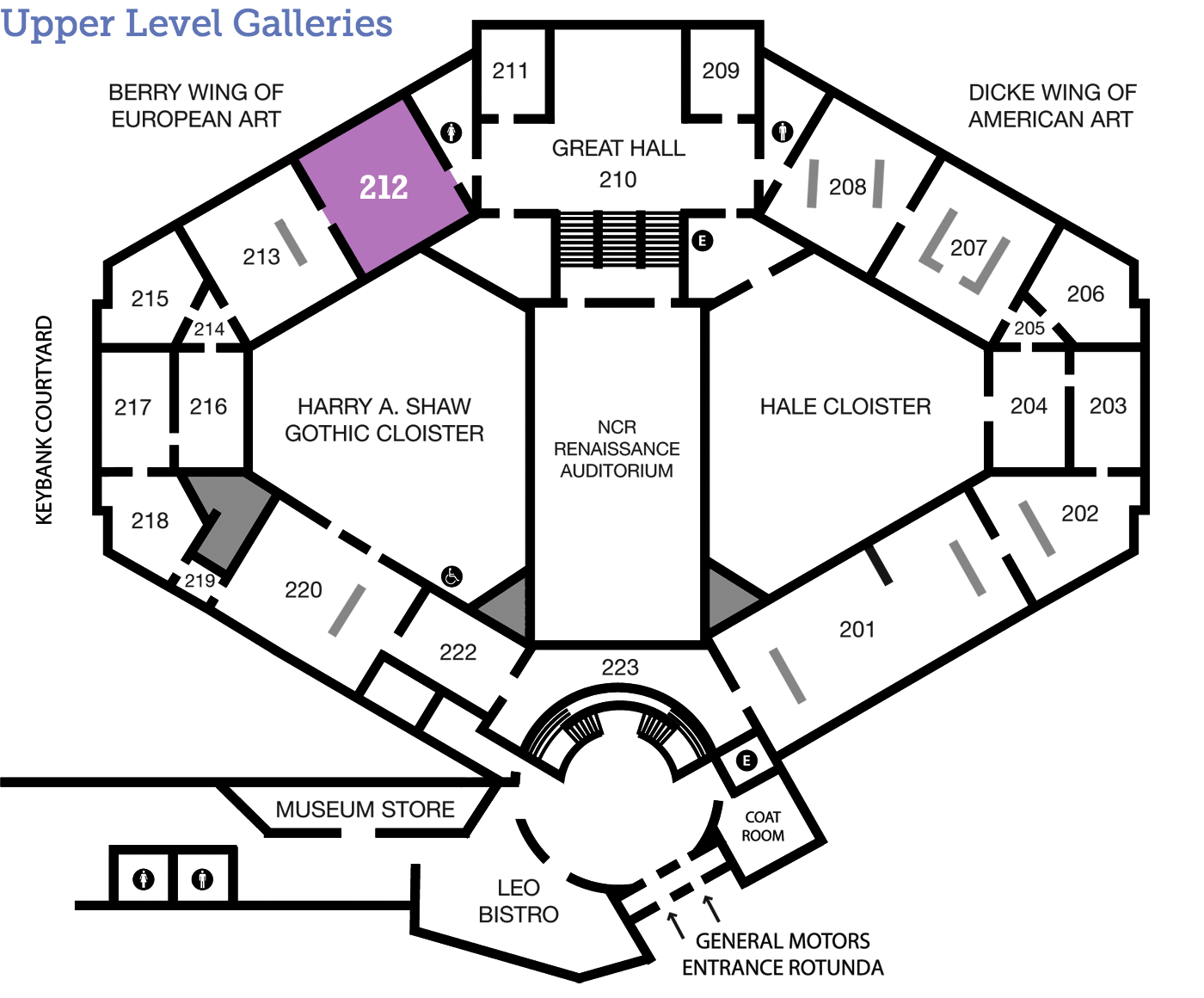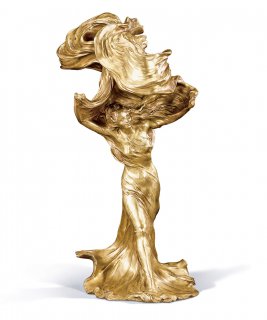
François-Raoul Larche
Loïe Fuller
(1860–1912)
French 1892 gilt bronze 18 1/8 in. Gift of the James F. Dicke Family 1998.27 212
Pre-Madonna?
Paris, 1892. The City of Lights is awe struck by a new star from Hinsdale, Illinois. American Loïe Fuller wowed crowds at the Folies Bergère with her spectacular dance shows with costumes and lighting that anticipated today’s stadium shows. Adored by artists such as Toulouse-Lautrec and a friend of scientists such as Marie Curie, this small sculpture captures Loïe Fuller’s magic in billows of bronze.
A Day in the Life
Tools and Techniques
Art vs. Science?
Loïe Fuller’s dancing inspired both the Art Nouveau and Symbolist art movements, which explored nature and the imagination as a means to respond to the rapid growth of mechanical technology. However, Fuller was as much an engineer as an artist. Her apparently magical dance depended on new technological innovations she developed and patented. Here is one of her patents, still registered with the United States Patent and Trade Office.
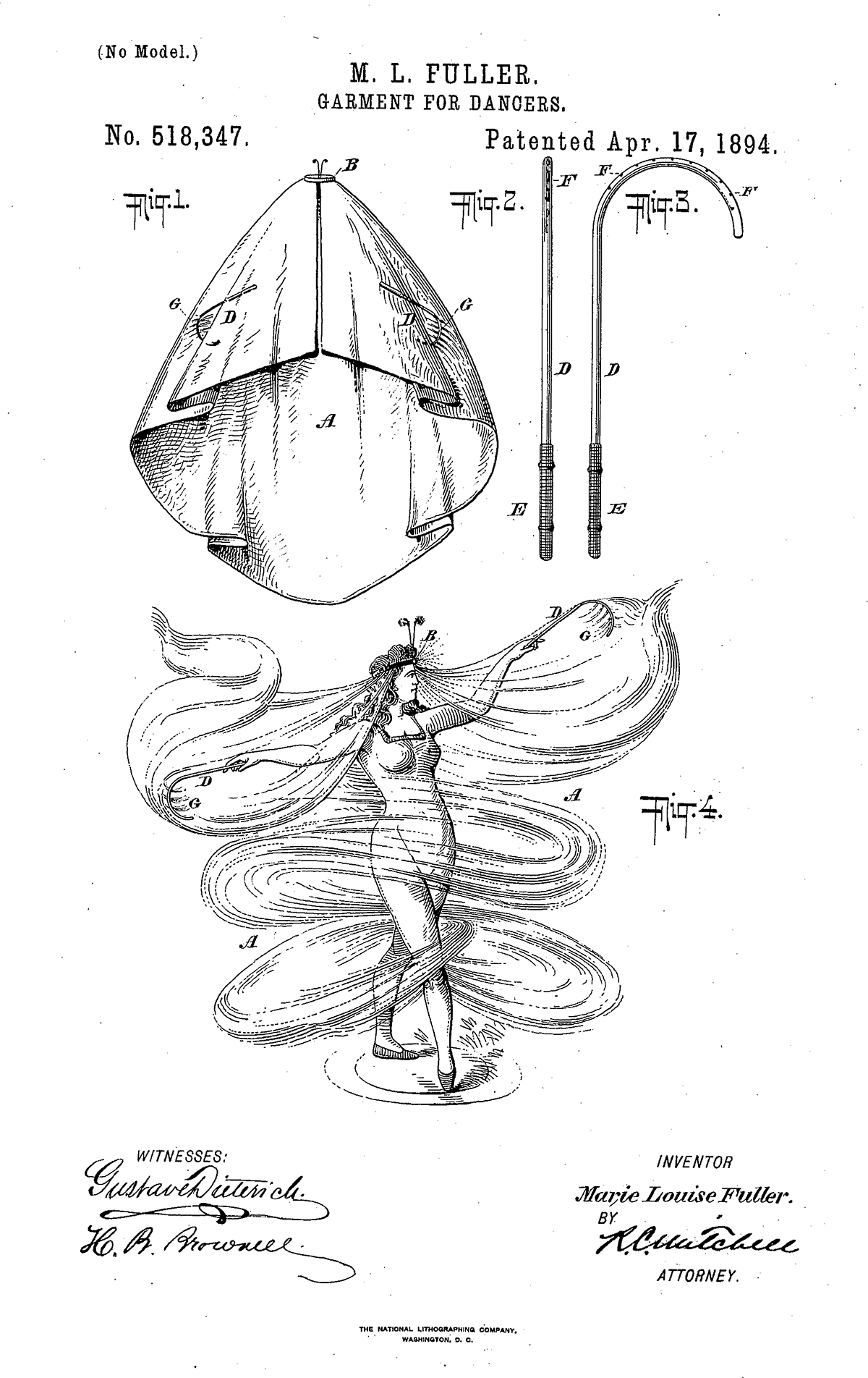
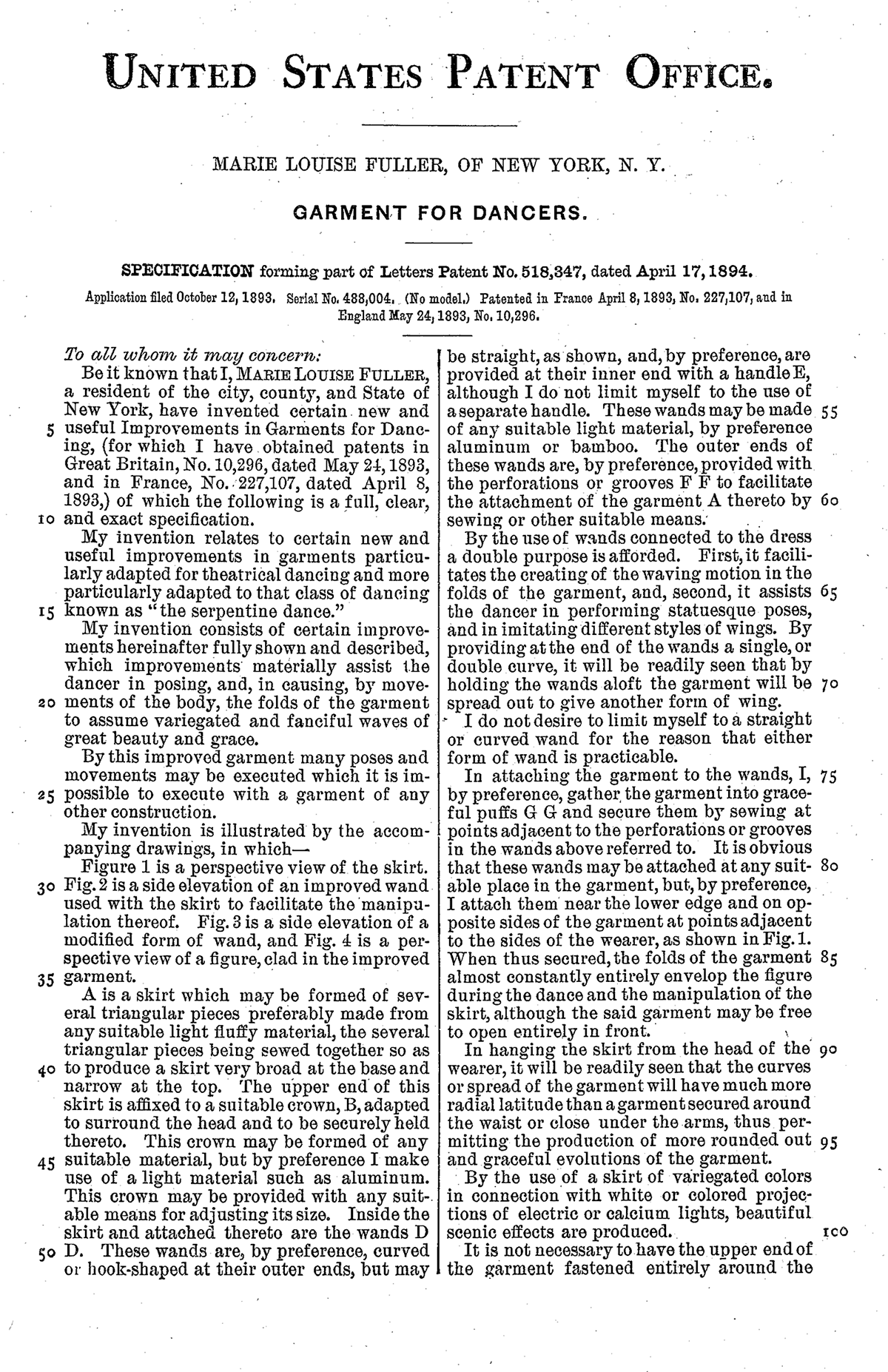
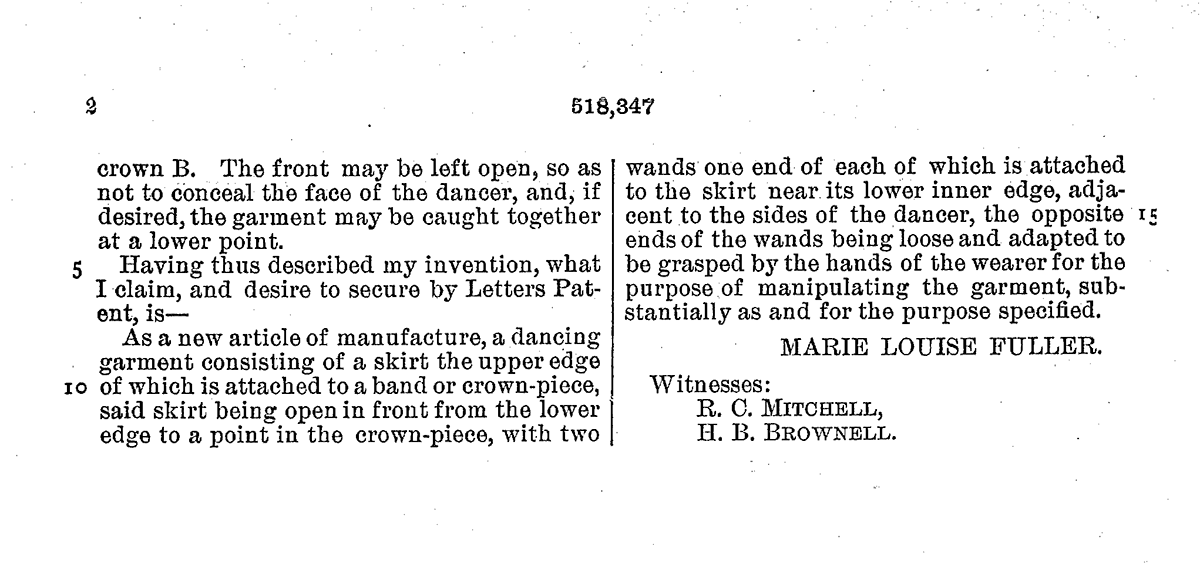
Marie Louise Fuller (1862–1928), Garment for Dancers, 1894 (document in the public domain; photograph provided by The United States Patent and Trade Office).
Behind the Scenes
Look Closer
Art You Can Use!
Quiz
This small sculpture is also made to serve a practical function. What do you think it is?
Bookend
Dance competition trophy
Beer tap handle for a ritzy Parisian cabaret
Lamp
Necklace holder
Just for Kids
Try it!
This is a sculpture of the American dancer Loïe Fuller. She became famous for her dancing and costumes in Paris, France in 1892. Look closely at this sculpture. Do you notice anything special about it?
Look at the sculpture again. This time pay attention to her pose. Can make the same pose? Pretend you are Loïe Fuller, how would you finish this dance?
Signs & Symbols
Dig Deeper
Arts Intersected
Dancing Sculpture
Jody Sperling performs contemporary dance that continues the innovative work of Loïe Fuller. Here, in a performance from 2007, she dances to Charles Griffes’s “The Night Winds” (1911, rev. 1915), providing some sense of Fuller’s original performance, including colored illumination beaming from the floor below.
Used with permission from Jody Sperling/Time Lapse Dance
The Sculpture Speaks
Did You Know?
Expert Opinion
Look Around
Dance!
Another work on the theme of dance in this room is Jean-Léon Gérôme’s Dance of the Almeh. Both are about dancing but one is a painting and the other a sculpture. How does the difference in medium affect your experience of dancing? Do you hear different kinds of music when you look at each one?
In the painting, many men watch the woman dance. Who watched Loïe Fuller dance? Who is watching her now?
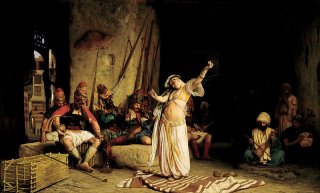
Jean-Léon Gérôme (1824–1904), Dance of the Almeh, 1863, oil on wood panel, 19 ¾ x 32 in. Gift of Mr. Robert Badenhop, 1951.15.
About the Artist
Talk Back
Lady Gaga’s Great-grandmother?
Loïe Fuller was a sensational performer and innovator who stunned audiences and had a wild following. What entertainer today do you think is most like Loïe Fuller? Do you think popularity makes something or someone a masterpiece?

